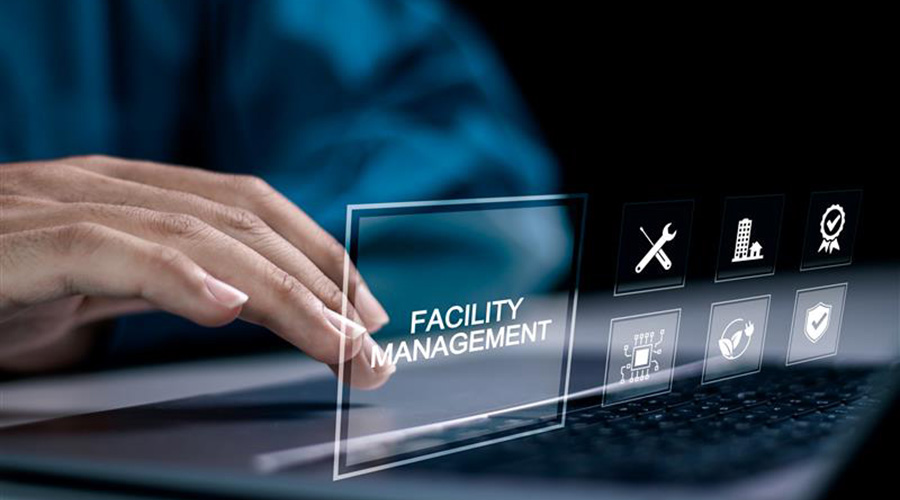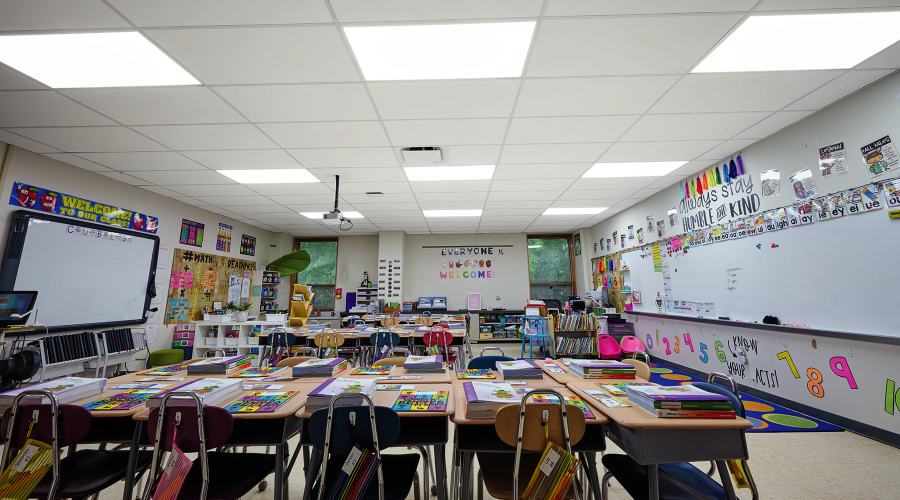Launching a Green Cleaning Program
A step-by-step approach may be the best way for a facility executive to manage the transition to green cleaning
The commercial cleaning marketplace is undergoing a transformation. Concerns over the impact that conventional cleaning chemicals are having on custodial employees, building occupants, and the environment are driving many more facility executives to consider green cleaning. With the commercial cleaning industry using an estimated 8 billion pounds of chemicals and nearly 4.5 billion pounds of paper products annually, the potential environmental impact inside and outside the facility is tremendous.
Many of the chemicals commonly found in conventional cleaning products have ingredients that can cause respiratory and dermatological problems for those who use the products and for those who occupy the facilities where they are used. Green cleaning programs are designed to move away from these products to ones that are less harmful to employees, building occupants and the environment.
Much attention has been focused on the cleaning products, but green cleaning involves more than just selecting green products. A successful green cleaning program requires that the right products be used in the proper quantity and that the recommended cleaning procedures for the job are followed. It requires that employees be properly trained. And it requires that building occupants understand what a green cleaning program is and what it means to them.
Fewer Harmful Chemicals
Green cleaning can be implemented in practically every type of facility, from schools and office buildings, to restaurants and retail facilities. Those who have put comprehensive programs in place have found that the benefits extend beyond the original purposes of protecting the health of employees, building occupants and the environment. Facility executives have found that green cleaning does not increase cleaning costs. In fact, over the long-term, green cleaning frequently reduces the total cost of cleaning. Because there are fewer toxic chemicals that employees must work with, liability exposure also is reduced. Similarly, with fewer toxic chemicals to store, track, maintain and dispose of, the cost of complying with regulatory requirements is reduced.
Fortunately, it is not necessary to reinvent the wheel when it comes to establishing a green cleaning program. Many of the program requirements can be found in the LEED for Existing Buildings (LEED-EB) program. While facility executives may have to rethink some of the materials and processes used, and likely have to purchase new cleaning equipment, it is not necessary, nor is it recommended, to implement the entire program all at once. The shift to green cleaning can be done gradually, updating materials, processes and equipment in one area at a time, expanding into additional areas as time and funding permit.
Cleaning Products
Typically, cleaning chemicals receive the most attention when organizations launch a green cleaning program. There are more than 100,000 chemicals that are registered with the EPA for use in cleaning. Only a small number of these have ever been closely studied in regards to how they affect the environment and people’s health. Even fewer have been certified as green products.
Any cleaning chemicals used in a facility’s green cleaning program should be certified by an independent testing program, such as Green Seal, EcoLogo, or EPA’s Design for the Environment Program. Certification demonstrates that the product has been proven to protect both people and the environment while being effective in performing its designated cleaning tasks. Simply relying on manufacturer’s claims is no guarantee that the product is actually green.
The move to green cleaning starts with an audit of the cleaning products already in use. Chances are at least some of them meet the standards for being green. Identify those products that meet green standards as well as those that will need to be changed. Then, narrow down the list of products that don’t meet green standards to those that can be changed relatively easily at minimal cost.
Changes in Process
Simply switching to green cleaning products will provide some level of improvement. However, if the green cleaning program is to achieve its full potential, facility executives should re-evaluate their cleaning procedures. For example, one of the most common problems with conventional cleaning programs is the overuse of cleaning chemicals. This is a result of the old belief that if some is good, more is better. To be effective, processes should be put in place to ensure that the proper amount of the right cleaning chemical is used for the particular job.
Audit the processes currently in place. Determine what steps need to be taken to modify those processes to make them green. It may be necessary to switch to automatic dispensers for cleaning chemicals to regulate the quantity of chemicals being used. All processes should be designed with a focus on the goal of protecting the health and safety of building occupants while still cleaning effectively.
It will also be necessary to review the equipment being used during the cleaning processes, as cleaning equipment can contribute significantly to poor IAQ. For example, conventional vacuum cleaners are a major contributor to indoor airborne dust. Water from extractors, if allowed to remain within the carpet for an extended period of time, can contribute to the growth of biological contaminants.
All vacuum cleaners used in a green cleaning program should be HEPA-rated. Units should meet the Carpet and Rug Institute’s vacuum cleaner requirements of capturing 96 percent of all particulate matter, 0.3 microns in size or larger. Units should also operate with a sound level less than 70 dba.
All carpet extractors should heat the cleaning solution to at least 200 degrees Fahrenheit to reduce drying time and to improve the cleaning effectiveness of the solution. The carpet extractor must be sufficiently effective at removing the water from the carpet so that the carpet fully dries in less than 24 hours.
Proper training is critical to the success of the green cleaning program. Without it, it is too easy for employees to fall back on past practices, negating many of the program’s benefits.
Requirements for training are not limited to staff who will be using the equipment. It is important to involve and educate everyone within the facility, including all employees and occupants, so that they understand why the switch is being made to green cleaning products and processes and what differences they can expect to see with a green cleaning program. Without that understanding, facility executives may receive a high number of complaints concerning the cleanliness of the facility.
For example, conventional cleaning chemicals typically have a fragrance that people come to expect, particularly in restrooms. Some green cleaning chemicals do not have similar fragrances. Unless building occupants understand the changes, they may assume that if they do not smell the fragrance that they are accustomed to, the restrooms are not clean.
Before moving to green products and processes, it is important to involve those who will be responsible for purchasing the equipment and supplies for the program. Green cleaning complicates the buying process. Chemicals and equipment should be certified by independent agencies. Those bidding to supply chemicals and equipment should be able to supply the necessary documentation to prove certification. Purchasing agents should understand the importance of that certification and not be willing to waive it to reduce costs.
Making the Move
Even with the full support of the organization, often it is best to move slowly. Suppliers for the cleaning products must be identified. Cleaning equipment that meets the required standards must be purchased. Employees must be trained in the use of the products and the equipment.
In auditing current cleaning products and processes, a number of changes should have been identified in order for the facility to move to green cleaning. Some of these changes will be relatively easy and can be implemented at no or low cost. Others will be more difficult because they will require a significant investment and new equipment and training.
Start with the no- or low-cost items. There remains a lot of skepticism among both building owners and occupants when it comes to green cleaning, including the cleaning effectiveness and the cost of the program. Facility executives can demonstrate the effectiveness of their program by taking a series of small steps toward green cleaning, and then showing both what has been done and what its impact is.
Facility executives can also implement some relatively low-cost items that will significantly improve the effectiveness of the program. One of these low-cost yet highly effective measures is the installation of walk-off matting at all building entrances. It has been estimated that as much as 90 percent of the dust found in the typical facility enters the building through the front door. Walk-off matting that extends for a minimum of 12 to 15 feet inside a building at each entrance will prevent much of this dirt from being tracked into the facility, thus reducing cleaning requirements.
Another effective measure that can be implemented to reduce cleaning requirements is the installation of touchless controls in restrooms facilities. Touchless faucets, dispensers and flush valves offer the benefits of improved hygiene and appearance, reduced cleaning costs, the elimination of cross contamination, and reduced water and product use; all of which are in line with the goals of a green cleaning program.
Once no- and low-cost items have been implemented, prioritize the remaining processes that will need to be modified, the extent and cost of those modifications, and develop an implementation schedule.
As the green cleaning program evolves, it is important that facility executives keep everyone informed about the program. This is particularly important during the early phases of the program when building occupants notice changes in the building and may raise complaints. Facing such complaints, it would be easy for employees or management to revert to old cleaning methods, negating the effectiveness of the green cleaning program.
Contracting For Green Cleaning
For facility executives who outsource cleaning services, selecting a qualified contractor is essential. Green cleaning programs are expanding at an estimated rate of 20 to 30 percent per year. While many qualified contractors can provide green cleaning services, some have simply added a green logo to advertising, claiming to be green without fully implementing or even understanding the necessary changes to make their processes green.
When evaluating contracting options, there are several factors facility executives should consider:
References. Any contractor bidding on green cleaning services should provide customer references. Facility executives should contact all references to determine how the contractor carried out the switch to green cleaning, how successful the switch has been, how the cleaning processes are different under green cleaning, and how the contractor communicated those changes to the building staff and occupants.
Experience. Contractors should be required to identify the certifications that the company and its employees have received. Ask for a listing of memberships in organizations that promote or set standards for green cleaning programs.
Products Used. Have the contractor identify what certification agency is used to demonstrate that the cleaning products used meet the requirements for green cleaning. The facility executive should also determine whether all of the contractors’ cleaning products are certified.
|
James Piper, PhD, PE, is a writer and consultant who has more than 25 years of experience in facilities management. He is a contributing editor for Building Operating Management.
Related Topics:











